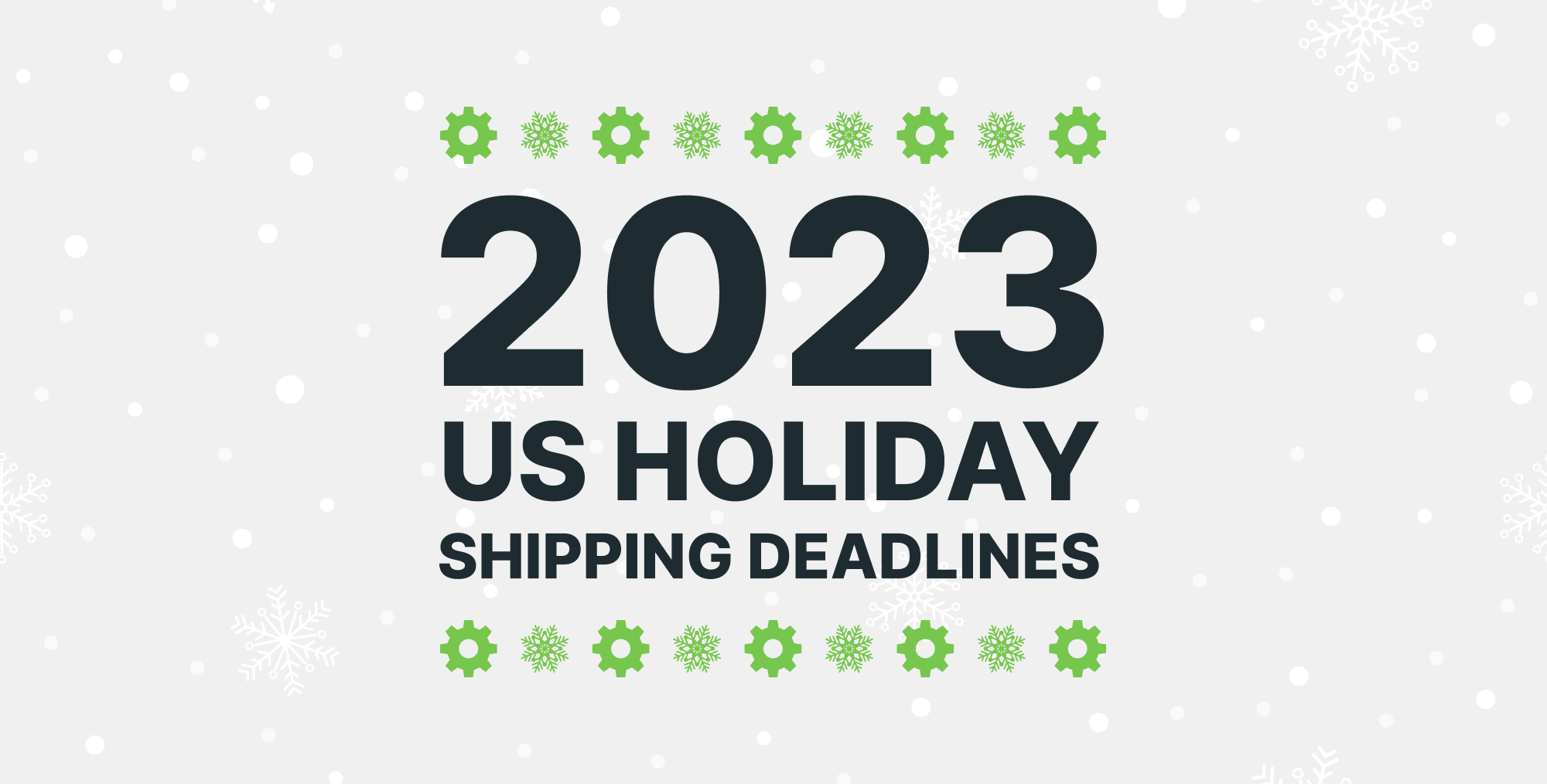Supply Chain Delays and Carrier Delays Can Impact the 2021 Holiday Season
Shoppers are going to experience a mix of old and new concerns heading into the 2021 holiday shopping season. Americans are more willing to go to in-person events, travel, and shop this holiday season than in 2020 thanks to increased vaccinations. Many Americans are ready to start buying again. While this is a good sign, there are external factors that give pause for concern.
In years past, demand was high for items like Furbees or iPods. But this year is seeing entire sectors of consumer goods being hard to get. In 2021, demand is greatly exceeding production capacity. The PlayStation 5 is in its second holiday season now and they still sell for way above their MSRP on resell sites. This illustrates the major issues merchants will need to be aware of heading into the 2021 holiday season: Customers are willing to pay for items that simply cannot be produced quickly enough to match demand.
While the 2020 holiday season saw merchants and customers having similarly diminished expectations, 2021 is a little different. With new supply chain delays, an overhaul of some shipping services, and carrier delays, customers may have an even harder time getting their hands on merchandise. This will require merchants to be prepared for spikes in order volume over a longer time period than the standard holiday season.
Supply Chain Delays
A large factor that looms over the 2021 holiday shopping season is the concern of long-term supply chain delays. While there were supply chain issues in 2020, many of the issues were further up the supply chain from consumers. In 2021, the issue has become more complex. Items are in production, but delays over the past year and a half have caused delays in scaling production to meet demand. As a result, demand grows at a disproportionate rate to what can be produced.
Internal components like chips, microchips, and semiconductors that are used in everything from iPhones to pet food dispensers have been hit especially hard. This is causing extensive delays in many high-demand holiday shopping items like consumer electronics and automobiles. This means customers may be shopping earlier this holiday season than in years past.
Because of these supply chain shortages, the earlier your business prepares for the holiday rush, the better prepared you will be for capturing more holiday sales. It’s likely that Black Friday will not be the ‘kickoff’ for the holiday shopping season this year.
Consumer Response to Supply Chain Delays
A study ShipStation conducted found that 71% of consumers were more likely to buy in bulk due to supply chain delays. The research study ShipStation conducted found that 90% of customers expect to be able to select the shipping speed at checkout. So, any advertised date ranges need to be met in order to avoid cancelled orders. Customers have become more lenient. However, in these uncertain times, consumers anticipate commitments to be met.
USPS Slows First Class Mail and USPS Peak Season Surcharges
During the first quarter of 2021, 22% of USPS First Class parcels were delivered late. Many Americans rely on this USPS service to ship parcels weighing under 16 ounces. However, as of October 1, 2021, the USPS will be slowing the service down to a 5-day delivery window. This is down from the 2–3 days it has historically taken to make final delivery.
In recent years, the USPS has reshaped First Class Mail. A few years ago, the historically flat-rate service started charging based on zones. Then, 2020 saw the USPS imposing a peak season surcharge on parcel deliveries—something the USPS had not done previously. The 2021 holiday season also sees a peak season surcharge. Ultimately, the USPS is having a difficult time adapting to the increasing demands of ecommerce. Scaling with the demand is more challenging than simply raising postage rates. It requires infrastructure changes and a growing workforce while also prefunding retirement benefits for new employees. Additionally, carriers like FedEx and UPS have long been better-suited for parcel delivery. For instance, parcels weighing over about 5 lbs are generally more affordable with UPS or FedEx than USPS.
Despite these changes, First Class Mail remains the best option for shipping lightweight parcels domestically within the US. Merchants and consumers alike will just need to better prepare for these new delays. The closer you get to December 25th, the more likely USPS Priority Mail will need to be used.
Carrier Service Rule of Thumb:
- USPS First Class Mail: Best option for parcels under 16 ounces.
- USPS Priority Mail: Best option for ground shipments between 1-5 lbs.
- UPS: Best option for ground shipments over 5 lbs.
- FedEx: Best for express parcels.
Consumer Expectations About Delivery Time
Many people have experienced shipping delays lately, and it is becoming something people have come to expect more. 78% of consumers anticipate slower delivery speeds than they did in previous years. And even though customers are more aware that this is not usually the merchant’s fault, being transparent with your customers is crucial. In fact, nearly the same amount, 77%, say that they expect to be given more insight into the cause of shipping delays—whether on the carrier side or seller side. Customers have finally become more engaged in what all goes into shipping.
57% of consumers said they’re unlikely to wait for Black Friday deals because they’re concerned about shipping delays 📦
— ShipStation (@ShipStation) November 22, 2021
Communicate Holiday Shipping Deadlines
Letting your customers know when the deadlines for certain services are avoids returned shipments during the holiday. That’s why it’s good to communicate different carriers’ holiday shipping deadlines to your customers to avoid late deliveries intended for December 25th.
How to Keep Your Shipping On Track This Holiday Season
Meeting customer expectations this holiday season means shipping parcels out as quickly as possible. You have to have everything properly filled out and your customers need to know when something is dropped off. Failing to meet these criteria can mean missed shipments. If you do meet these expectations, customers are more likely to return to you for future purchases. Using a shipping software like ShipStation allows you to meet customer expectations while also simplifying your shipping process and access discounted shipping rates that don’t require volume-based thresholds.
Use Better Shipment Tracking Emails
A major complaint during the shipping process, particularly during the holiday season, is that shipping delays are not properly communicated. ShipStation makes sending confirmation emails simple. Including shipment confirmation emails that link to a better tracking page allows your customers to get the quickest insight into where their package is at on its way to them.
Batch Print Shipping Labels
A great way to reduce the amount of time it takes to print labels is to print them in bulk. ShipStation’s batch printing allows you to print labels in batches of up to 500 at once.
To save time and money on shipping this holiday season, sign up for ShipStation’s 30-day free trial.





